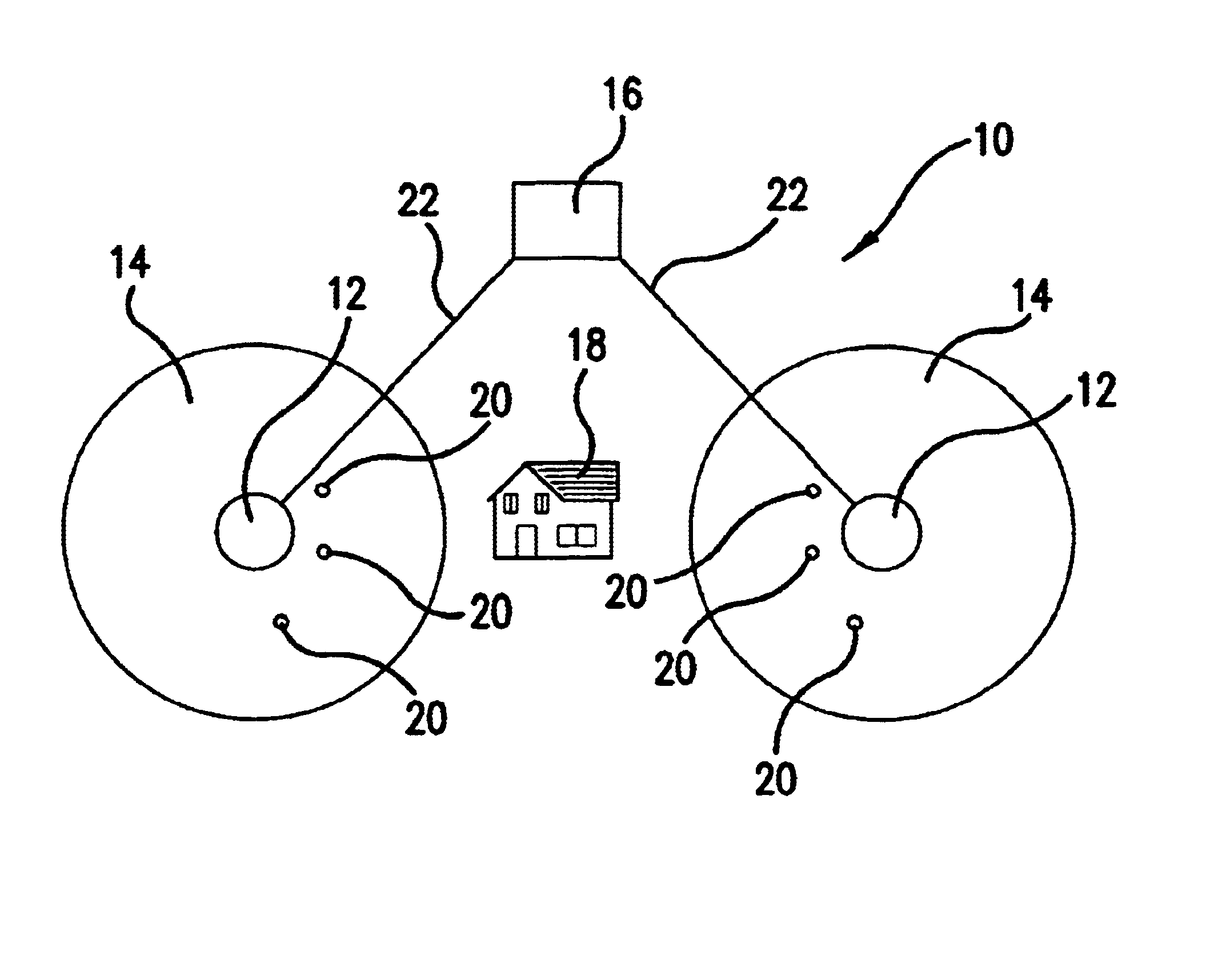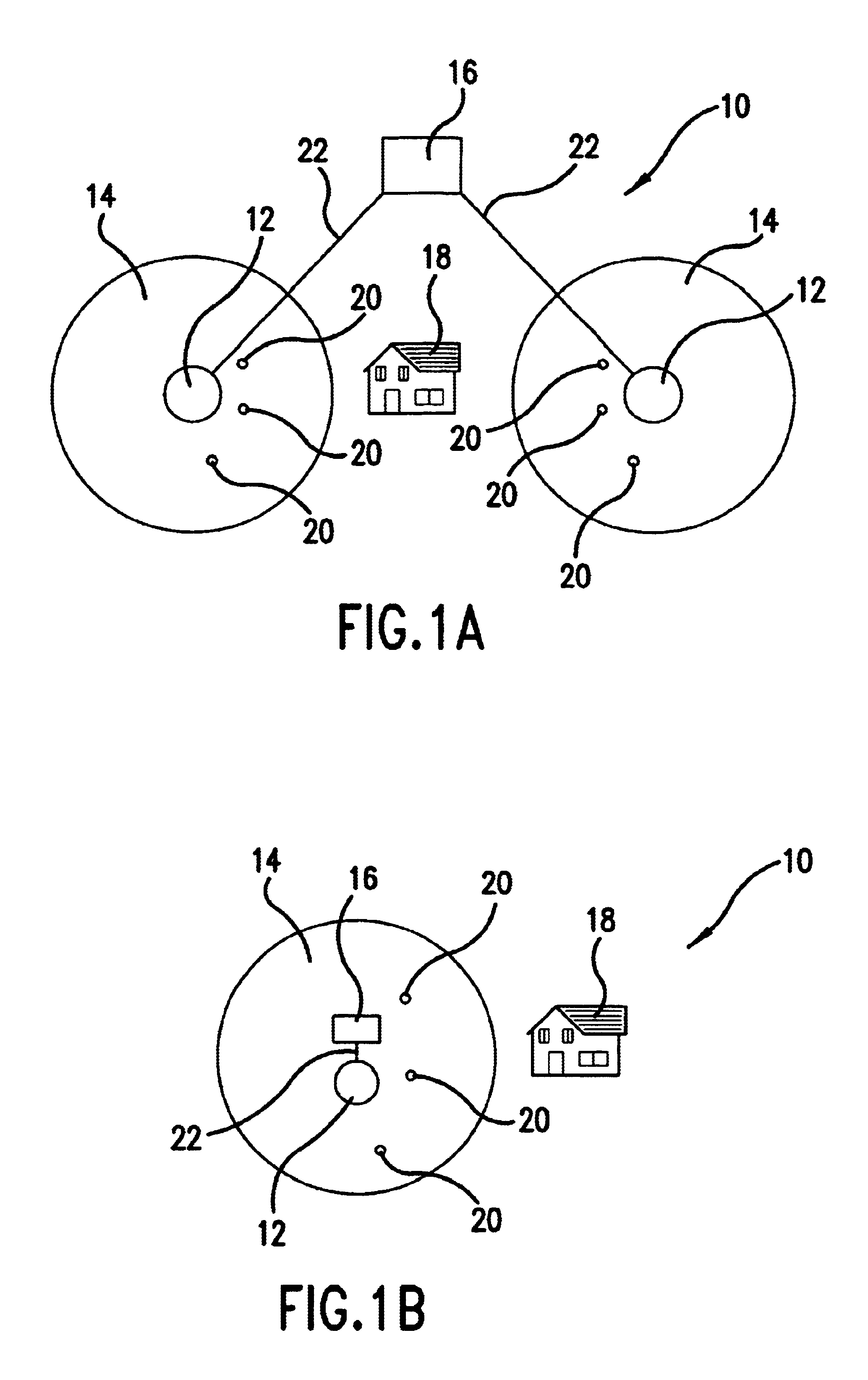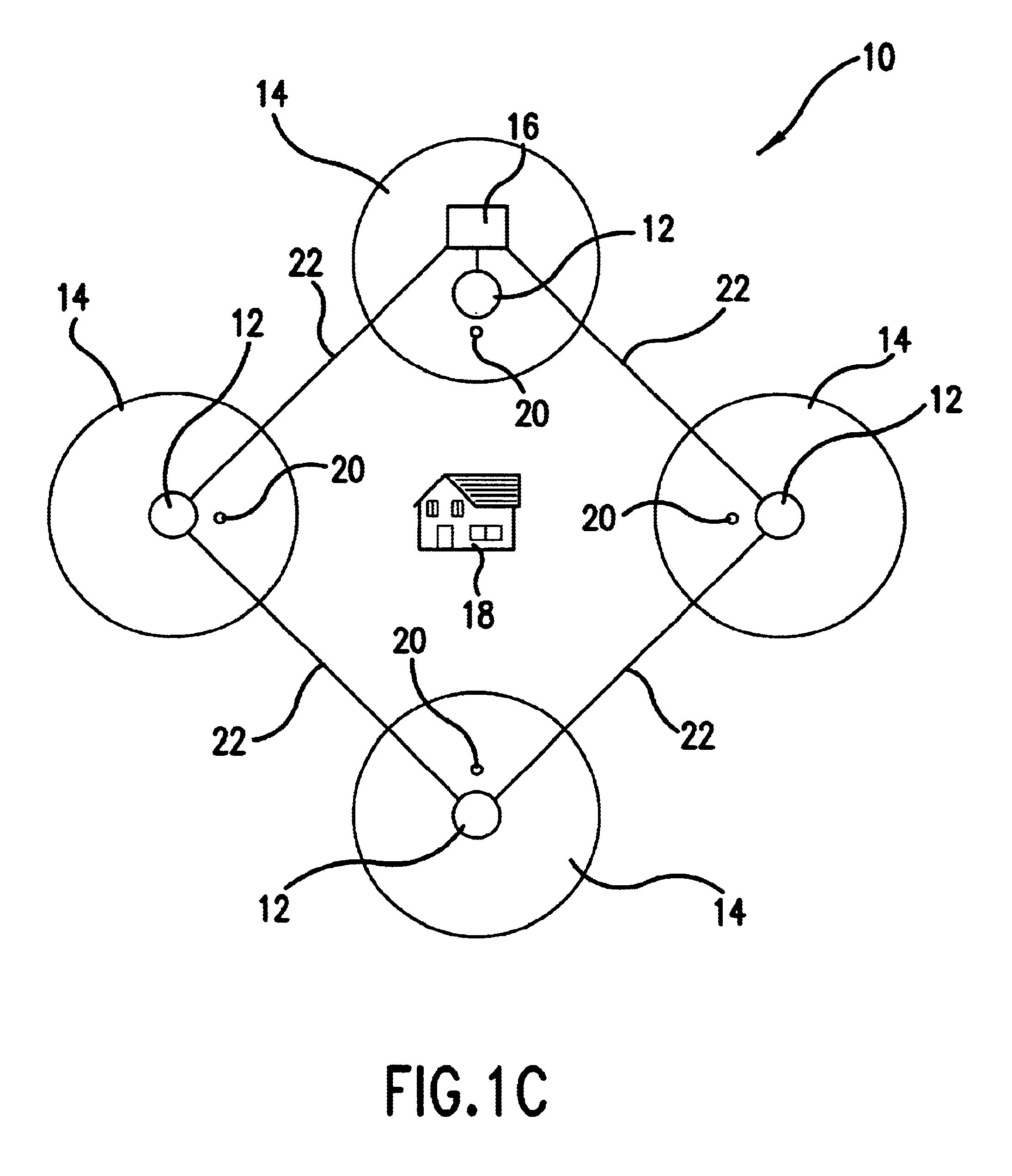Positive directed movement of termites by radio waves as a basis for control procedures
a radio wave and radio wave technology, applied in the field of termite control technology, can solve the problems of irreversible structural damage in buildings throughout the world, and the inability to adequately protect termite-susceptible structures from infestation
- Summary
- Abstract
- Description
- Claims
- Application Information
AI Technical Summary
Problems solved by technology
Method used
Image
Examples
examples
Field observations of the natural populations of the termite Coptotermes formosanus on the Lualualei Naval facility, Oahu, Hi. were conducted over a 10-year test period. These field observations indicated that movements of this subterranean termite are affected by radio waves of a frequency about 1-100 megahertz, preferably about 1-30 megahertz, and more preferably about 2-20 megahertz. The intensity of the radio transmission can be about 1-100 kilowatts; preferably about 1-10 kilowatts. Antenna arrays were formed of wires supported by large pressure-treated Douglas-fir wooden poles and were located over a large portion of the facility. The frequency of the radio waves ranged from about 1-100 megahertz at transmission intensities from about 1-100 kilowatts.
FIG. 2A is a diagrammatic representation of the disposition of antenna arrays within the test area. In FIGS. 2A-C, the diagram of the test area is divided into an eastern and a western portion by a dashed-line. The locations of nu...
PUM
 Login to View More
Login to View More Abstract
Description
Claims
Application Information
 Login to View More
Login to View More - R&D
- Intellectual Property
- Life Sciences
- Materials
- Tech Scout
- Unparalleled Data Quality
- Higher Quality Content
- 60% Fewer Hallucinations
Browse by: Latest US Patents, China's latest patents, Technical Efficacy Thesaurus, Application Domain, Technology Topic, Popular Technical Reports.
© 2025 PatSnap. All rights reserved.Legal|Privacy policy|Modern Slavery Act Transparency Statement|Sitemap|About US| Contact US: help@patsnap.com



